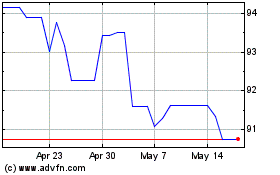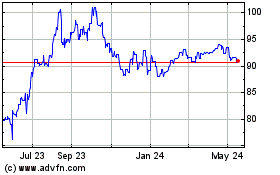For India, the year 2015 was all about making progress, with
many calling it "a bright spot" in an otherwise dull world economic
scene, though some crucial economic reforms hit
roadblocks.
Sizzling Growth After GDP Tweak, Beats China
India's economic growth rate surpassed China's this year on
strong demand and investment, making it the fastest growing major
economy in the world. Latest statistics showed that GDP rose 7.4
percent year-on-year in the three months to September, while the
Chinese economy expanded only 6.9 percent during the same
period.
While the robust growth data ought to be reason enough to cheer,
many economists and policymakers, including the central bank chief,
took the news with a pinch of salt.
Apparently, skeptics felt a change in the national accounts
calculation method introduced at the start of the year was masking
the real picture as other economic indicators failed to match the
optimism of the GDP figures.
The Central Statistical Office had revised the base year for GDP
data to 2011-12 from 2004-05 and also shifted to measuring GDP at
market prices, rather than on factor cost. The GDP growth figure
for 2013-14 was sharply revised to 6.9 percent from 4.7 percent
calculated in the old method. The economy expanded 7.4 percent in
2014-15.
The International Monetary Fund expects India to grow 7.5
percent the next year, above China's projected rate of 6.3 percent.
And in December, the government downgraded its growth forecast for
the financial year ending March 2016 to 7-7.5 percent from 8.1-8.5
percent seen earlier.
Eyeing Inflation
The country's central bank, the Reserve Bank of India, was in
for historical moves this year. Under the governorship of former
IMF chief economist Raghuram Rajan, the bank inked a deal with the
government for a major revamp of the monetary policy framework to
place focus on inflation.
The agreement, dated February 20, stated that the inflation
target "for financial year 2016-17 and all subsequent years shall
be 4 percent with a band of plus or minus 2 percent".
The deal was a major overhaul for the RBI, since its
establishment in 1935, and came at a time the Indian economy is
gearing up for stronger growth momentum in the coming years. The
move was also a major step for the economy that was opened up in
1991.
The RBI also started to target inflation based on the consumer
price index rather than wholesale prices.
The bank reduced interest rates four times this year, lowering
it by 125 points in total. After maintaining status quo early
December, Rajan signaled willingness to ease further, keeping in
view the imminent interest rate hike in the U.S.
The repo rate is currently at 6.75 percent and the reverse repo
rate at 5.75 percent. The cash reserve ratio for banks is at 4
percent.
Reform Power
During the year, India benefited from falling crude prices to a
large extent. The West Texas Intermediate grade of crude oil has
seen its price fall by roughly 29 percent this year and is
currently around $37-a-barrel mark. Lower oil prices helped to
reduce inflation and narrowed the current account deficit
considerably, as oil constitutes a major portion of the country's
imports. The forex reserves position also improved.
In its second year in office, the pro-business Narendra Modi
government were into economic reforms big time. Thanks to the
different government schemes, foreign investors flocked to the
country as investment norms were relaxed in several major
sectors.
Foreign Direct Investment limits were raised in defense,
banking, medical equipment, insurance, pension and airport
operations, among others. Foreign equity was allowed in the pension
sector and railways.
The government is confident of achieving the fiscal deficit
target of 3.9 percent of GDP and the revenue deficit of 2.8 percent
this financial year. However, the fiscal outlook for the next year
looks challenging.
No Surprises
The Indian stock market did not throw up any major surprises and
trading was largely affected through out the year by the
speculation over an imminent US Fed rate hike that eventually
materialized this month, and domestic factors such as politics.
Both the major indexes - the Sensex and the Nifty - are set to
end the year in the red, the weakest performance in four years. The
BSE Sensex is down 5.16 percent for the year (as of December 29th,
2015) and the NSE Nifty has lost 4.27 percent during the same
period.
The Indian rupee was largely stable during the year and even one
of the best performers among its Asian peers, despite global
concerns over the interest rate hike in the U.S. and the Chinese
yuan devaluation. The RBI intervened in the currency markets in
several instances to stem further depreciation of the currency.
Challenges
As a proposed wage increase for government employees is set to
add an additional 0.65 percent of GDP to expenditure, the
government said that the commitment to further fiscal consolidation
of 0.4 percent needs to be re-assessed.
Putting a damper on the economic cheer this year was the failure
of the government to win parliament approval for a key tax reform -
the Goods and Services Tax (GST) Bill. The GST is a single levy on
manufacture, sale and consumption of goods and services throughout
India that will replace the existing system under which taxes are
collected separately by central and state governments.
The government hopes to overcome the political gridlock in the
next session of the parliament so that it can meet the April 1,
2016 deadline set for the GST roll out.
Way Forward
The economic situation in the year ahead looks to be more stable
as analysts expect the government and the central bank to focus on
policy implementation than formulation. A key milestone to be
achieved would be the roll out of the GST in April. Consumption is
expected to receive a boost from increased spending power after the
implementation of the recent pay reforms for the public sector
employees.
The DBS Group Research said this month that if the normalization
cycle in the U.S. is accompanied by a stronger dollar, higher real
rates and / or a bout of weak foreign sentiment, India's
unfavorable external debt profile would emerge as a source of
concern.
India continues to be well positioned for robust growth in 2016
and 2017, Danske Bank analysts said, citing the benefits from lower
oil prices, better external and domestic balances and a
reform-oriented government. They expect higher inflation to keep
the RBI from easing further and the rupee to depreciate about 5
percent in 12 months
US Dollar vs RUB (FX:USDRUB)
Forex Chart
From Jun 2024 to Jul 2024

US Dollar vs RUB (FX:USDRUB)
Forex Chart
From Jul 2023 to Jul 2024
